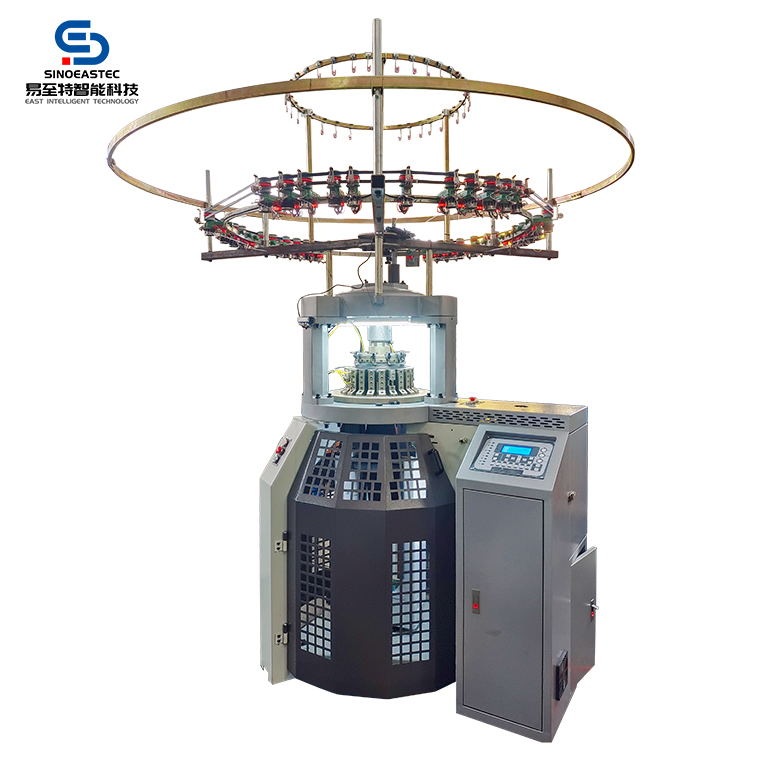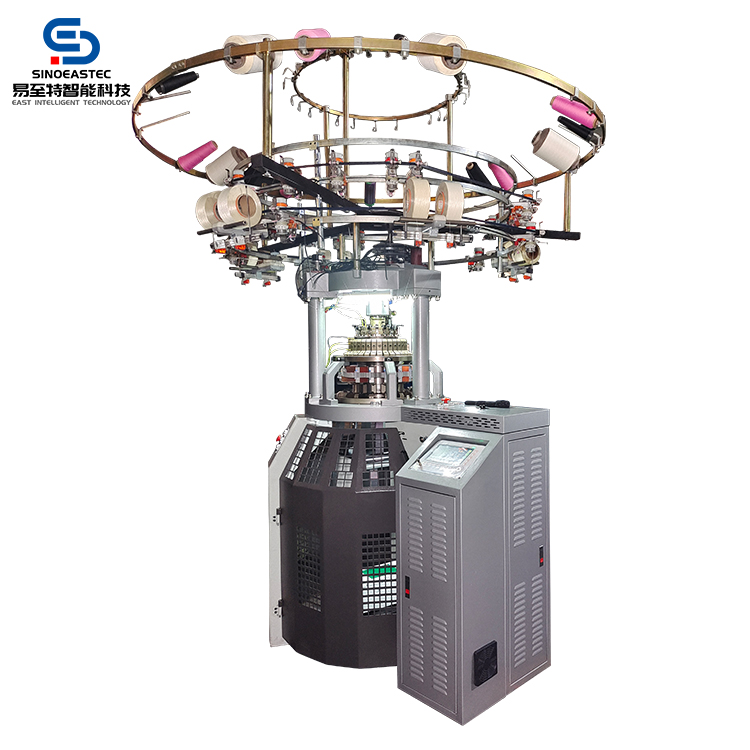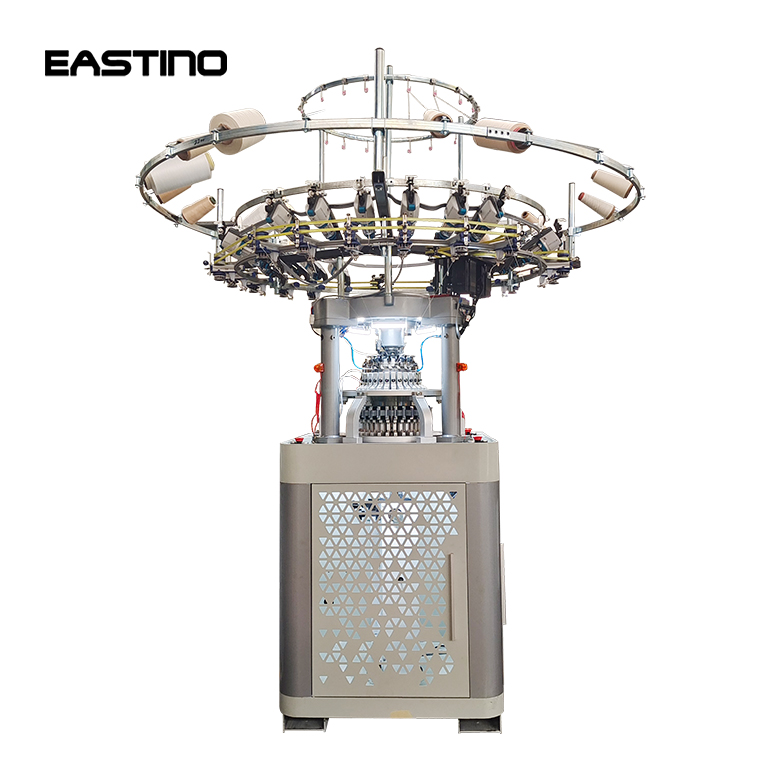Introduction
In the textile machinery sector, circular knitting machines have long been the backbone of knit fabric production. Traditionally, the spotlight falls on large-diameter machines—24, 30, even 34 inches—known for their high-speed mass production. But a quieter revolution is underway. 11 to 13 inch cylinder circular knitting machines—once considered niche tools—are now gaining popularity worldwide.
Why? These compact yet versatile machines are carving out a distinct role in the era of fast fashion, customization, and technical textiles. This article explores why 11–13 inch machines are in demand, analyzing their working advantages, market drivers, applications, and future outlook.
Compact Machines, Big Advantages
1. Space-Saving and Cost-Efficient
For textile mills operating in densely packed industrial zones, floor space comes at a premium. An 11–13 inch circular knitting machine requires significantly less space than a 30-inch counterpart. Smaller diameter also means reduced energy consumption and easier maintenance.
This makes them highly attractive for:
Small factories with limited space
Startups looking to enter knitwear manufacturing with lower capital investment
R&D labs where compact setups are more practical
2. Flexibility in Sampling and Prototyping
One of the biggest selling points is sample development efficiency. Designers can test a new yarn, gauge, or knit structure on a smaller machine before committing to mass production. Since the knitted tube is narrower, yarn consumption is lower, which reduces development costs and accelerates turnaround time.
For fashion brands in the fast fashion cycle, this agility is invaluable.
3. Easier Customization
Because 11–13 inch cylinder machines are not built for massive throughput, they are ideal for small-batch or custom orders. This flexibility matches the rising global trend toward personalized apparel, where consumers seek unique fabrics, patterns, and garment fits.

Market Drivers Behind the Popularity
1. The Rise of Fast Fashion
Fast fashion brands such as Zara, Shein, and H&M release collections at unprecedented speed. That requires quick sampling and rapid turnaround of prototypes. 11–13 inch circular knitting machines make it possible to test, tweak, and finalize fabrics before scaling to large machines.
2. Small-Batch Manufacturing
In regions where small-batch production is common—like South Asia for local brands or North America for boutique labels—small-diameter machines offer the perfect balance between cost and versatility.
3. Research and Education
Universities, technical institutes, and textile R&D centers increasingly adopt 11–13 inch circular machines. Their compact size and manageable learning curve make them effective teaching and experimentation tools, without the overhead of full-scale production machines.
4. The Push for Sustainable Production
With sustainability becoming a key priority, textile manufacturers aim to minimize waste during sampling. Smaller diameter machines consume less yarn during trials, aligning with eco-friendly goals while reducing material costs.
Applications: Where 11–13 Inch Machines Shine
Although these machines cannot produce wide-width fabrics, their strengths lie in specialty applications:
|
Application |
Why It Works Well |
Example Products |
| Garment Components | Matches smaller circumferences | Sleeves, collars, cuffs |
| Fashion Sampling | Low yarn consumption, quick turnaround | Prototype T-shirts, dresses |
| Sportswear Panels | Test mesh or compression zones | Running shirts, active leggings |
| Decorative Inserts | Precision patterns on narrow fabric | Fashion trims, logo panels |
| Medical Textiles | Consistent compression levels | Compression sleeves, support bands |
This versatility makes them especially appealing for niche brands and technical textile developers.

Industry Voices: What Experts Are Saying
Industry insiders emphasize that the popularity of 11–13 inch machines is not about replacing large-diameter units but complementing them.
“Our customers use smaller cylinder machines as their R&D engine. Once a fabric is perfected, it gets scaled to our 30-inch units,” says a sales manager at a leading German knitting machine manufacturer.
“In Asia, we see rising demand from boutique factories producing high-value garments. They don’t need 20 tons of output per month, but they do need flexibility,” notes a distributor in Bangladesh.
Competitive Landscape
Key Players
European Manufacturers (e.g., Mayer & Cie, Terrot) – focus on precision engineering and R&D-friendly features.
Japanese Brands (e.g., Fukuhara) – known for robust, compact models that cover cylinder sizes starting from 11 inches.
Asian Suppliers (China, Taiwan, Korea) – increasingly competitive with cost-efficient alternatives.
Challenges
Throughput Limitations: They cannot meet massive production orders.
Technological Competition: Flat knitting, 3D knitting, and seamless knitting machines are strong competitors in the sampling niche.
Profit Pressure: Manufacturers must rely on service, customization, and technical upgrades to differentiate.

Future Outlook
The global popularity of 11–13 inch circular knitting machines is expected to grow steadily, driven by:
Microfactories: Small, vertically integrated units producing short-run collections will favor compact machines.
Smart Features: Integration of electronic needle selection, IoT monitoring, and digital patterning will enhance performance.
Sustainable Practices: Lower yarn waste during sampling will align with eco-certifications and green production goals.
Emerging Markets: Countries like Vietnam, India, and Ethiopia are investing in smaller, flexible knitting setups for their growing garment sectors.
Analysts predict that while 11–13 inch machines will never dominate global production volumes, their role as innovation drivers and customization enablers will only become more important.
Post time: Oct-17-2025
